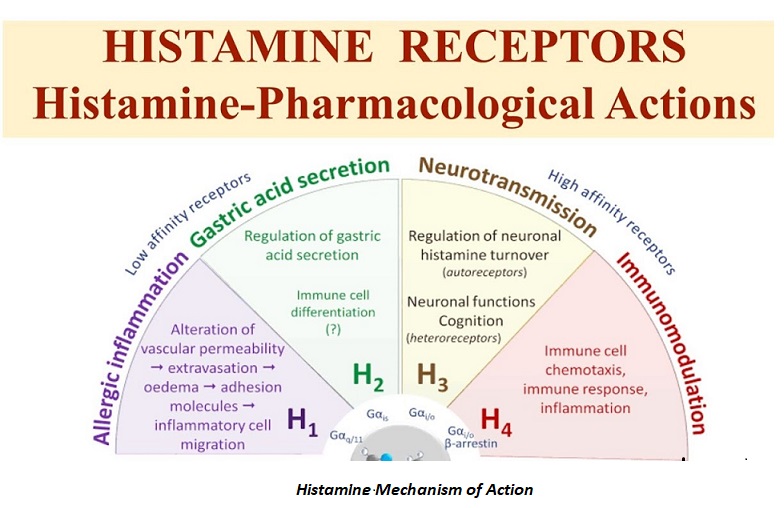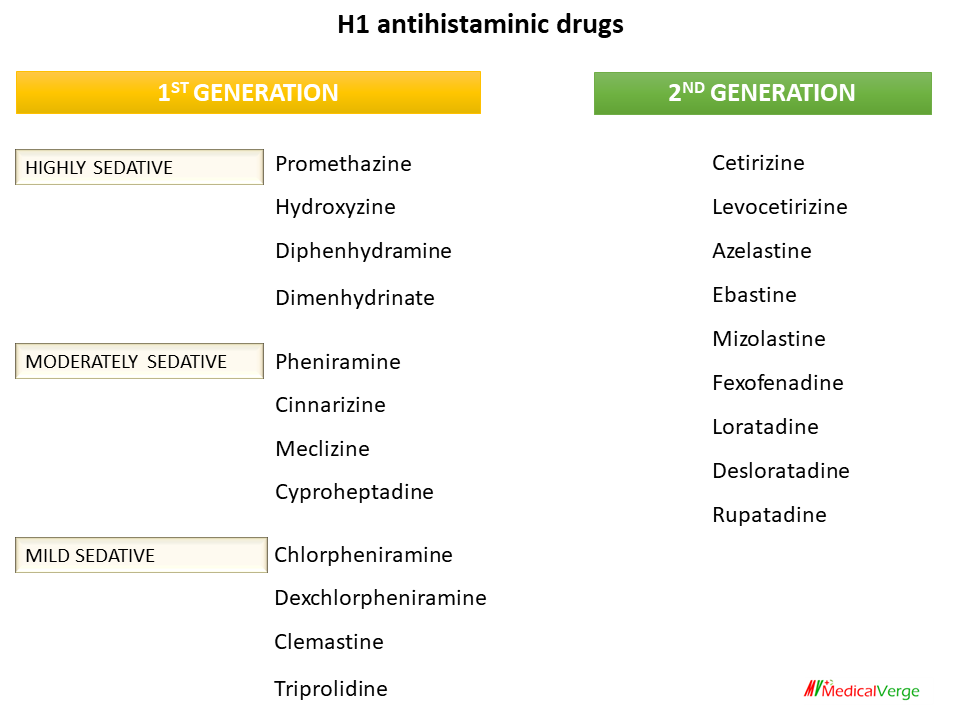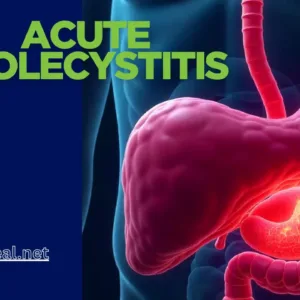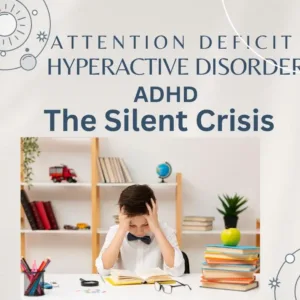
Anti Histamine
Anti histamines (Anti Allergy) are a class of drugs that work by blocking the effects of histamine, a chemical that is released by the body during an allergic reaction. Anti Allergy are most commonly used by people who have allergic reactions to pollen and other allergens. Variety of other conditions are also treated such as stomach problems, colds, anxiety and more.
What are Allergy ?
Allergies occur when the body reacts to a foreign protein, known as an allergen. Typically, these allergens are harmless, but if an individual is allergic to a specific protein, their immune system respond excessively to its presence. Common substances that may not affect some people, like dust or animal dander, can trigger an allergic reaction in those who are sensitive. in response to these perceived foreign substances, the body initiates an exaggerated immune response, releasing histamine and causing various allergy symptoms.
What is Histamine ?
Histamine is an organic compound that participates in local immune responses and functions as a neurotransmitter. Additionally, it plays a role in the inflammatory response and serves as a mediator of pruritus (itching). Basophils are responsible for producing histamine, and it is present in nearby connected tissues. Histamine increases the permeability of white blood cells, facilitating the engagement of pathogens with infected tissues.
Commonest substances causing Allergies ?
- Food.
- Dust.
- Pollen.
- Pet dander, saliva or urine.
- Mold.
- Insect bites and stings.
- Latex.
- Certain medication/ Drugs.
Allergic symptoms ;
- Congestion
- coughing.
- Wheezing, shortness of breath.
- nausea and vomiting.
- Itchy skin, hives and other skin rashes.
- A running or blocked nose, or sneezing.
- tiredness.
- Insomnia.
- Itchy, red, watering eyes.
Classification of Anti Histamine ;
- H-1 receptor antagonists or H-1 blockers
- H-2 receptor antagonists or H-2 blockers
H1-antihistamines function by binding to the H1 receptor of histamine in mast cells, smooth muscles, endothelial cells in the body and in the brain tuberomammillary nucleus. Antihistamines targeting the H1-receptor of histamine are useful in treating allergic reactions in the nose (itching, runny nose, and sneezing) and act as allergen neutralizer. It also aids in the treatment of insomnia and alleviates symptoms of motion sickness or dizziness stemming from complications in the inner ear.
-
First generation Antihistamines;
First generation Antihistamines began to be approved in the United States in the 1930s and are still prescribed today.
- H₁ antagonists, also known as H₁ blockers, constitute a category of medications designed to inhibit the action of histamine at the H₁ receptor, providing relief from allergic reactions
- These medications act on histamine receptors in the brain and spinal cord, in addition to other types of receptors.
-
Second generation Antihistamines,
Second-generation antihistamines gained FDA approval and were introduced to the market in the 1980s.
- Unlike first-generation antihistamines, they typically do not induce sedation and drying effects.
- Second-generation compounds do not readily cross the blood-brain barrier as compared to their first-generation counterparts.
- Lipophobicity
- Large molecular size
- Electrostatic charge

Some common antihistamines ;
First-generation antihistamines: diphenhydramine (Benadryl), chlorpheniramine (Chlor-Trimeton), loratadine (Claritin), cetirizine (Zyrtec)
Second-generation antihistamines: fexofenadine (Allegra), loratadine (Claritin), desloratadine (Clarinex), cetirizine (Zyrtec)

What other medical condition Antihistamines treat ?
H-1 antihistamines treat:
- Allergic rhinitis/hay fever.
- Allergic conjunctivitis.
- Hives and other skin rashes.
- Colds.
- Food allergies.
- Hypersensitivity to certain drugs.
- Insect bites and stings.
First-generation H-1 antihistamines also treat:
- Insomnia.
- Motion sickness.
- Anxiety.
H-2 anti histamines treat:
- Heartburn.
- Gastroesophageal reflux disease (GERD).
- Duodenal and gastric ulcers.
- Zollinger-Ellison syndrome.
Other conditions antihistamines treat include:
- Anorexia.
- Headaches.
- Anaphylaxis.
- Vertigo.
- Parkinson’s disease (to decrease stiffness and tremors).
- Some types of bone pain.
Healthcare professionals might recommend antihistamines for various conditions beyond their typical use.
What are the Side Effects ;
First Generation ;
- Drowsiness.
- Dry mouth, dry eyes.
- Blurred or double vision.
- Dizziness and headache.
- Low blood pressure.
- Mucous thickening in the airways.
- Rapid heart rate.
- Difficulty urinating and constipation.
Second Generation ;
- Headache.
- Cough.
- Tiredness.
- Sore throat.
- Abdominal pain or discomfort
- Nausea or vomiting.
- Drowsiness.
- Joint or muscle pain.
- Headache.
- Confusion in the elderly.
- Dizziness.
- Breast swelling and tenderness.

Can Anti Histamine be taken in Pregnancy?
Tips ;
- Should be started with low dose and then titrate up accordingly as needed.
- Take the anti histamine at least 30 minutes before exposure to the allergen.
- Avoid driving or operating machinery until you know how the antihistamine affects you.
Frequently Asked Questions – FAQs
Which antihistamine is the most effective?
Antihistamines like Claritin and Zyrtec are commonly available over-the-counter. Physicians generally regard them as safe and effective treatments for allergies. Both are antihistamines of the second generation. These antihistamines are less sedating than first-generation antihistamines.
Are anti histamines anti-inflammatory?
Recent studies have uncovered additional anti-inflammatory effects associated with antihistamines, extending beyond their conventional role in histamine receptor inhibition. Emerging research suggests that these medications can reduce the expression of cell adhesion molecules.
Do antihistamines work immediately?
Anti histamine medications usually start working within 30 minutes of taking them and are most effective within 1-2 hours of taking them. Antihistamines exhibit greater efficacy when taken regularly as a preventive measure, rather than solely in response to the onset of symptoms.
What is the highest histamine food?
Strawberries, bananas, pineapple, and pears belong to the category of fruits, while eggplant, avocado, tomatoes, olives, and beans are examples of vegetables. Cheese, yogurt, and processed cheese are classified as dairy products.
How do you flush histamine out of your body?
Over 95 percent of surplus histamines are eliminated from the body via urine, underscoring the importance of water in facilitating histamine clearance. Adequate water intake helps maintain safe and healthy histamine levels, enabling the body to efficiently digest them.




